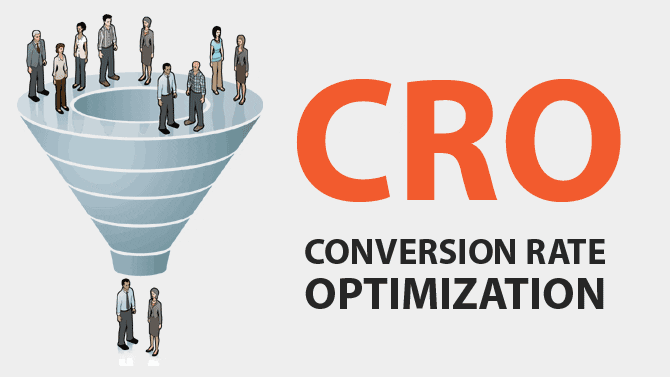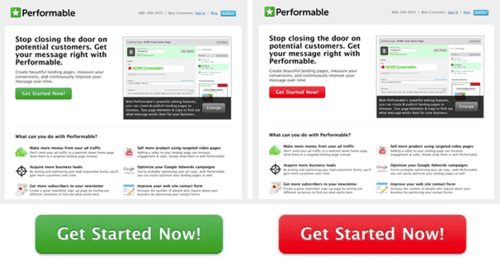
“In internet marketing, conversion optimization, or conversion rate optimization (CRO) is the method of creating an experience for a website or landing page visitor with the goal of increasing the percentage of visitors that convert into customers.”- wikipedia.org
The process for CRO is started with analysis of analytics reports. Statistics analyzed include:
Bounce & Exit Rates
- Bounce Rate – The percentage of people who leave your website after only viewing one page. A high bounce rate will lead to a low conversion rate and fewer conversions.
- Exit Rate – This statistic which is specific to each page on the site is the percentage of people who leave the site after viewing this page. It is different than a bounce because people can leave a site after viewing many pages on the site and not bounce. Exit Rate just shows the last page that was viewed.
Engagement Metrics
- Average Time on Site – The longer visitors view your site and interact with your brand, the more likely they are to convert.
- Average Page Views – The more pages the visitor views on your site the more likely they are to convert.
Conversion Rates
- Total Conversions – The total number of people who filled out a form or took another action on your website which you have specifically tracked as a conversion (a sale, a trackable phone call, etc.).
- Conversion Rate – The number of conversions divided by the number of visitors. This is probably the most important statistic of all. It is the best measure of the quality of a visitor from any given source.
Tips for Increasing Your Conversion Rates
- Check the conversion rate by traffic source/medium. Marketing efforts that have an above average conversion rate should be supported with additional attention and at times additional budget. Consider making changes to or pausing efforts that have poor conversion rates.
- Dive into your analytics a little deeper and check to see what particular keywords, ads, referring sites, etc. have high conversion rates and support those efforts with attention and budget. Learn from what works and start additional campaigns that are similar or that have some of the same basic building blocks. This holds true for search marketing (PPC) campaigns, natural search, email marketing, social media and any other trackable form of traffic-generating marketing campaign. Learn what works and replicate it across other parts of the internet (on new websites), marketing to other similar demographics (if possible).
- Take a hard look at the visitors who have not converted and figure out why. Check to see if conversion rates are lower for mobile visitors compared to visitors who use their desktop or laptop computer to access the site. If there is no mobile site or if the mobile site is not set up with proper conversion points, the conversion rate for mobile visitors can be low. With ever growing usage of mobile internet browsing, mobile friendly sites need to be maintained.
- Check to see what the language of your visitors computers are set to. If there are languages in the list with a large percentage of visitors and the site is not offered in that language, it most likely will lead to a low conversion rate.
- Check browser settings of your visitors and make sure that your website functions in all of the major browsers, browser versions and operating systems. Eliminating browser specific issues can have an immediate effect on conversion rates.
- Take a look at the pages of your site in your analytics. Pages that have a high bounce rate may need to be changed. If a site has a high bounce rate, it is helpful to check to see what the primary source of traffic is to that specific page. At times it is the source of traffic and not the page that is the problem. For instance, if a web page ranks highly in natural search for a phrase that is not related to the site, it may drive lots of visitors to the site that are not interested in your site after they see what it is actually about. In such a case, it may be a good idea to revisit the natural search engine optimization for that page and tweak the keywords on that page in an attempt to rank highly for a phrase that is more relevant.
- If a pay-per-click landing page has a high bounce rate, more drastic and immediate changes can be made such as redesigning the landing page, changing the text, adding a stronger call to action or simply trying a new landing page all together. Comparing landing pages with low bounce rates to those that have high bounce rates can often help.
- Adding conversion points to a site such as adding a small contact form to every page can increase conversion rates. Adding a strong call to action at the bottom of every page or just making your conversion points more visible will also help. There have been many studies which suggest that making the conversion button larger and a brighter color alone can drastically increase conversion rates. In a study by Hubspot which compared red buttons to green buttons, “The red button outperformed the green button by 21%”.
However, do not start making all of your buttons red as a result of this study. Each site is different. We recommend that you run your own tests to see what you can do to increase conversion rates. Get in touch with our digital marketing team today.
If You Like This Article, Please Share It!









